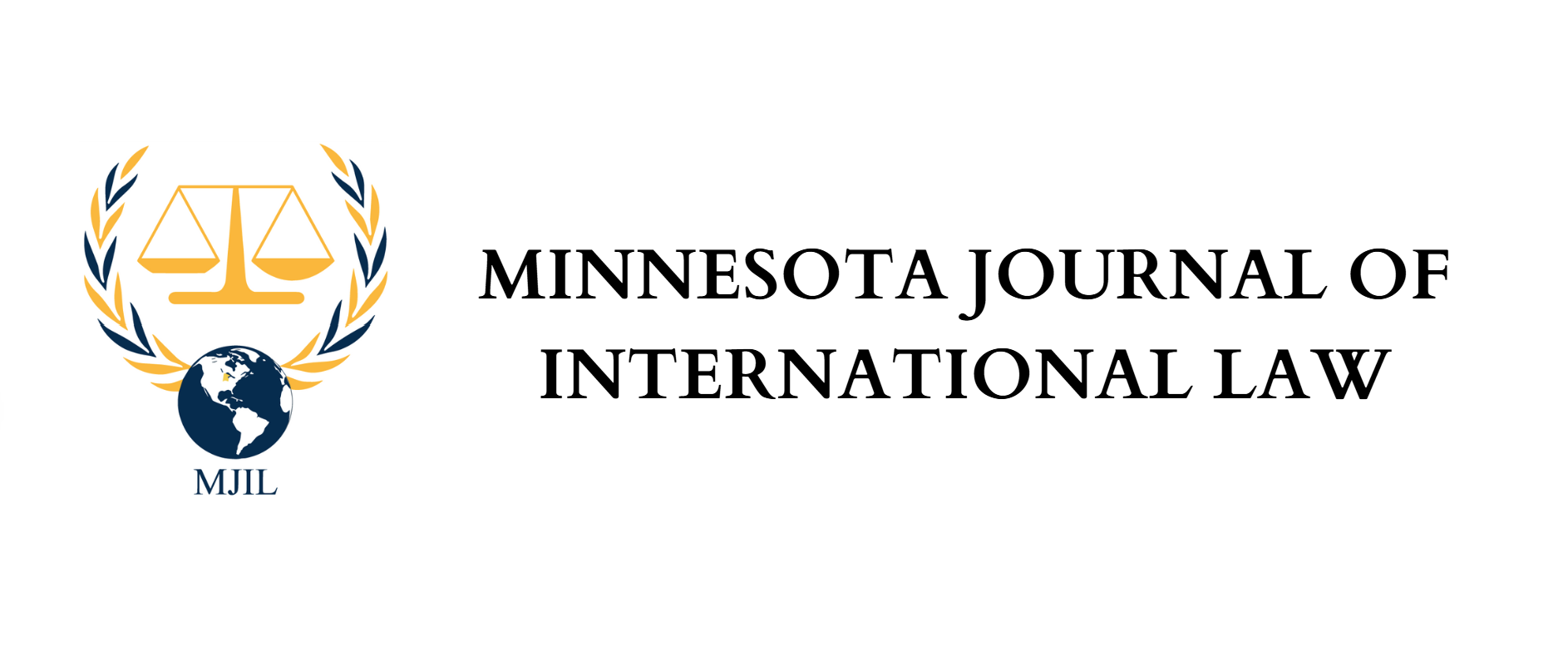Luca Costin
In recent years, Minnesota small talk has shifted from snow to haze. Smoke emanating from wildfires in Canada has traveled south across the border, darkening our skies. The past three years have been some of Canada’s worst years for wildfires on record.[1] In July, four Minnesota lawmakers sent a letter to the Canadian Ambassador asking, “how [their] government plans on mitigating wildfire and the smoke that makes its way south.”[2]
In August, Canada announced $45.7 million in funding for “wildfire prevention and risk assessment research projects.”[3] In the announcement, parliamentary secretary to the federal energy and natural resources minister, Corey Hogan, said, “There’s no people that want to do more about wildfires than Canadians… But I think this also underlines the international challenges that are brought by climate change.”[4] Given these international challenges, are there any cross-state solutions? More specifically, is there any way Minnesota can participate in these international solutions?
Most international wildfire agreements relate to cooperative emergency response and not prevention. The United States already has an agreement with both Canada and Mexico.[5] The Canadian agreement designates relevant departments to facilitate border crossings.[6] It also designates the country requesting assistance to pay the assisting country’s costs, including accidents.[7] The Agreement’s 2025 Operating Plan specifically “does not override or supersede any existing cooperative wildland firefighting arrangements such as border or compact agreements.”[8]
Compact agreements occur at the subnational level, with states and provinces coming together for a mutual goal.[9] This subnational diplomacy is more often called paradiplomacy.[10] The Great Lakes Forest Fire Compact (GLFFC) is one of the many North American fire compacts. The Compact includes Michigan, Minnesota, Wisconsin, Ontario, and Manitoba, each represented through its respective relevant agency.[11] The agreement aims to “promote effective prevention, presuppression and control of forest fires in the…Region…by providing mutual aid….”[12]
Many recent examples of GLFFC show members receiving aid. Minnesota’s 2021 wildfire season was fierce. The Greenwood fire burned over 25 thousand acres of the Superior National Forest.[13]Minnesota asked for help, and the Compact provided Minnesota firefighters, fire engines, and aircraft to aid in these fires.[14] In 2023, Wisconsin sent firefighters to Northern Michigan through the compact.[15] In 2023 and 2025, Minnesota sent crews to Manitoba to help fight the record-breaking wildfires.[16] In addition to the inherent gain of further localizing resource sharing, the GLFFC has separate committees dedicated to fire prevention, forest health, prescribed fire, and training.[17] This is likely especially useful given the region’s ecological challenges, which are not found in the rest of the United States[18]
The Great Lakes Forest Fire Compact demonstrates that diplomacy and international cooperation need not take place through the Federal Government. Minnesota may be able to take a more active role in preventing smoke in its skies. When Minnesota fires contributed to smoky skies, compact members were there to help put it out.[19] Canadian wildfires present a much bigger challenge, but it’s important to remember all people of the great lake’s region want to put a stop to it. Perhaps, international cooperation can help us clear the air in more ways than one.
[1] Fact Sheet: Climate change and wildfires, Canadian Climate Institute (July 23, 2024) https://climateinstitute.ca/news/fact-sheet-wildfires/.
[2] Letter from Congress Member Tom Tiffany to Ambassador Kirsten Hillman (July 7, 2025), https://tiffany.house.gov/sites/evo-subsites/tiffany.house.gov/files/evo-media-document/canadian_wildfire_smoke_letter.pdf (on file with author).
[3] Sean Boyton, Canada vows more wildfire action as smoke sparks U.S. complaints, Global News (Aug. 12, 2025 6:21 pm) https://globalnews.ca/news/11331353/canada-wildfire-research-funding-us-smoke/.
[4] Id.
[5] Michael Eburn, The international law of wildfires, Research Handbook on disasters and international law 336, 346 (Edward Elgar pub., 2016).
[6] Arrangement Between the Department of Agriculture and the Department of the Interior of the United States of America and the Department of Natural Resources of Canada Concerning the Exchange of Wildland Fire Management Resources, Can.-U.S., July, 22, 2023, Nat’l Interagency Fire Center, https://www.nifc.gov/sites/default/files/NICC/3Logistics/Reference%20Documents/U.S.%20Canada%20Wildland 20Fire%20Arrangement%20202306-26-2023-165144-1.pdf
[7] Eburn, supra note 5, at 348.
[8] Arrangement Between the Department of Agriculture and the Department of the Interior of the United States of America and the Department of Natural Resources of Canada Concerning the Exchange of Wildland Fire Management Resources Operating Plan for 2025, Apr. 28, 2025, Nat’l Interagency Fire Center, https://www.nifc.gov/sites/default/files/NICC/3Logistics/Reference%20Documents/CAN_US_Ops_Plan_2025_Final.pdf
[9] R. Bruce Sackinger, Paradiplomatic Maneuvers on the Longest Undefended Border: National and Subnational Fire Protection Agreements Between Canada and the United States, 13 Willamette J. Int’l L. & Disp. Resol. 319, 321 (2005);
[10] Id.; See also Conor J. Mannix, The Chorus Doctrine: Promoting Sub-National Diplomacy in Regional Growth Management, 97 Wash. L. Rev. 627 (2022) (exploring the interaction between paradiplomacy and the compact clause).
[11] About the GLFFC, The Great Lakes Fire Compact, https://sites.google.com/view/glffc/information/about-the-glffc?authuser=0 (last visited Oct. 2, 2025).
[12] Great Lakes Forest Fire Compact, 1983, Nat’l Cetner for Interstate Compacts, https://compacts.csg.org/wp-content/uploads/2024/03/Great-Lakes-Forest-Fire-Compact.pdf.
[13] Greenwood Fire, Minnesota Incident Command System, https://mnics.org/wpress/left-sidebar-menu/incident-information/minnesota-incidents/2021-incidents/ (last visited Oct. 2, 2025).
[14] Press Release, Timothy Walz, Governor, Minnesota, Minnesota Firefighters Respond to Call from Manitoba to Help Fight Canadian Wildfires (July 3 2023), https://mn.gov/governor/newsroom/press-releases/?id=1055-583487
[15] Id.
[16] Ricardo Quintanilla, Wildfire in Northern Michigan 90% contained, aid arrives from Wisconsin DNR firefighters, Mlive (June 4, 2024 at 8:37 PM), https://www.mlive.com/news/2023/06/wildfire-in-northern-michigan-90-contained-aid-arrives-from-wisconsin-dnrfirefighters.html; Minnesota Incident Command System, (@mnics.org), Facebook (July 13, 2025 at 9:56 AM), https://www.facebook.com/mnics.org/posts/on-june-29-the-great-lakes-forest-fire-compact-glfcc-crews-1-and-2-returned-from/1145189907654134/.
[17] Committees, Great Lakes Forest Fire Compact, https://sites.google.com/view/glffc/committees?authuser=0 (last visited Oct. 2, 2025).
[18] Madison Gaffney, Note, Only Bilateral Agreements Can Stop Wildfires: Why Diplomacy Through the U.S.-Canada Air Quality Agreement (AQA) is a Solution for Wildfire Related Transboundary Pollution, 24 Vt. J. Envtl. L. 1, 8-10 (2022).
[19] Summer of Smoke, 2021, Department of Natural Resources, (Jan. 12, 2022), https://www.dnr.state.mn.us/climate/journal/summer-smoke-2021.html.
